#special collections and university archives
Text

Five cats drinking from a bowl and a kitten staring at the camera, Packer Corners commune, ca. October 6, 1969
The American Revolution Documentary Collection
Simon, Peter, 1947-. Five cats drinking from a bowl and a kitten staring at the camera, Packer Corners commune, ca. October 6, 1969. Peter Simon Collection (PH 009). Special Collections and University Archives, University of Massachusetts Amherst Libraries
#cats#five cats#cats drinking#kittens#kittens staring at cameras#peter simon collection#american revolution documentary collection#special collections and university archives#umass amherst
14 notes
·
View notes
Text




A mixed bag of letters and animals (featuring a couple of dragons!) from a beautiful 1525 book of Canon law. Someone please make these decorated initials into Bananagrams tiles.
#riesenfeld center#umn#university of minnesota law#university of minnesota law library#rare books#umn law#special collections#archives#law#canon law#dragons#initials#bananagrams
580 notes
·
View notes
Photo
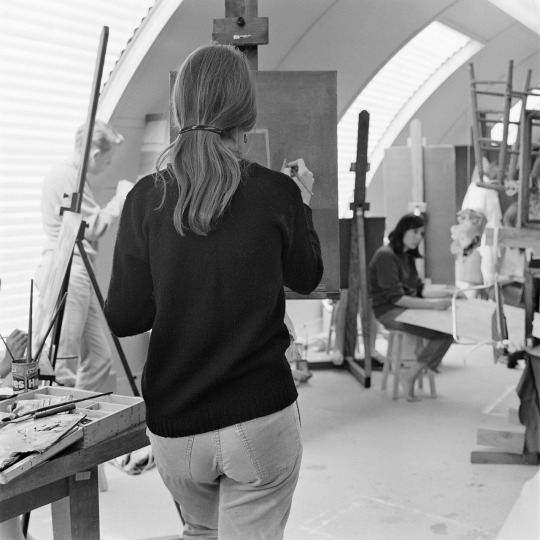
Harry Crosby, UCSD, Visual Arts classroom, 1966
#academia#60s#60s fashion#1960s#1960s fashion#vintage fashion#vintage#artist#visual arts#harry crosby#ucsd#university of california#uc san diego#san diego#easel#artist studio#artist easel#black and white#photography#special collections & archives uc san diego#an3_m333_785_10
150 notes
·
View notes
Text
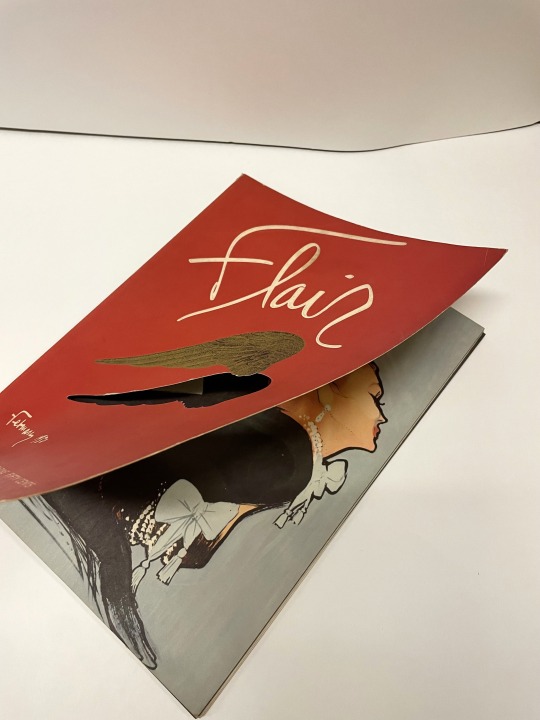
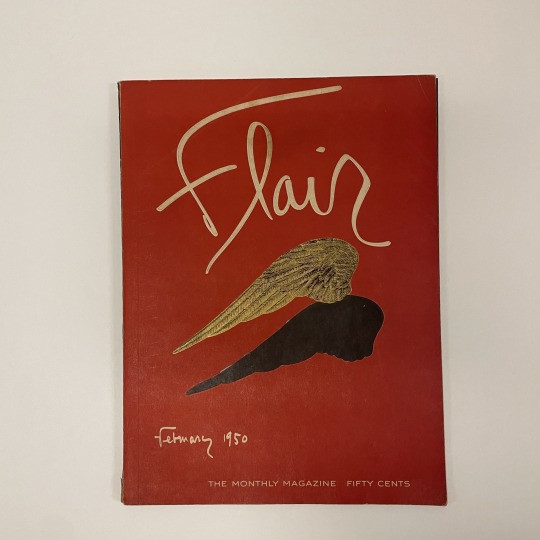
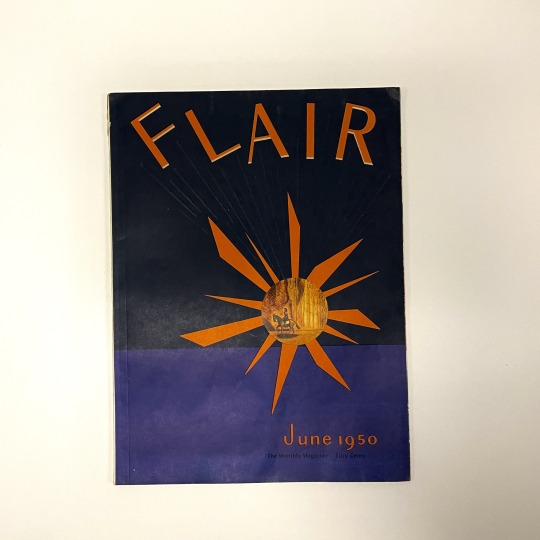
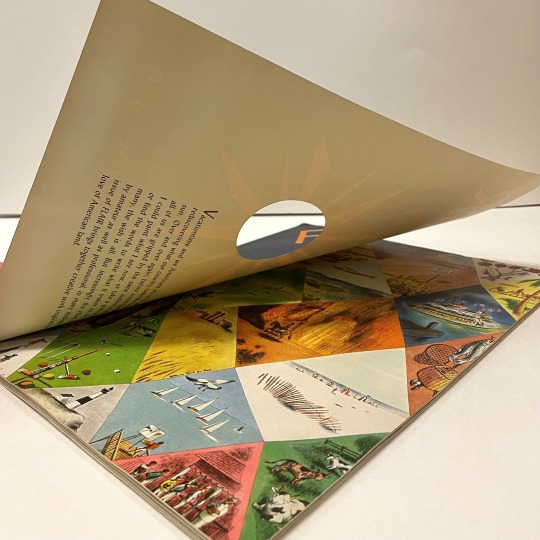



Enjoy the bright colors in this lovely run of Flair, the influential literary, design, and culture magazine launched by Fleur Cowles in 1950. Cowles brought a fine-art focus to what had been a mass-market format, the magazine, and featured the most influential artists, designers, and writers of the day. Some of the photographs here show off the cutouts in the magazine covers, which reveal glimpses of a second design. Read more about Flair in the Paris Review.
#history of journalism#magazines#flair#graphic design#mizzou#special collections#libraries#university of missouri#rare books#bookhistory#illustration#archives#husni collection
31 notes
·
View notes
Text
Lorenzo Langstroth unvarnished

Lorenzo Langstroth, 1890. From Langstroth on the hive & honey bee, rev. by Dadant. 1892.
December 25th, Christmas Day, is a day for sharing and giving. It also happens to be the birthday of a man known as the father of American beekeeping: Lorenzo Langstroth, born Philadelphia, Pennsylvania in 1810. With both happy occasions in mind, Mann Library is pleased to announce a resource that we’re pretty sure students of beekeeping and its history will find a wonderful gift: a fully digitized, searchable copy of Langstroth’s handwritten personal journal. Where a researcher would have once had to make an in-person trip to our special collections reading room to attempt a deciphering of Langstroth’s (infamously difficult to read) handwriting, the journal is now freely available (and actually readable!) as both a digitized version of the original work and in a transcribed form as part of the online Biodiversity Heritage Library.
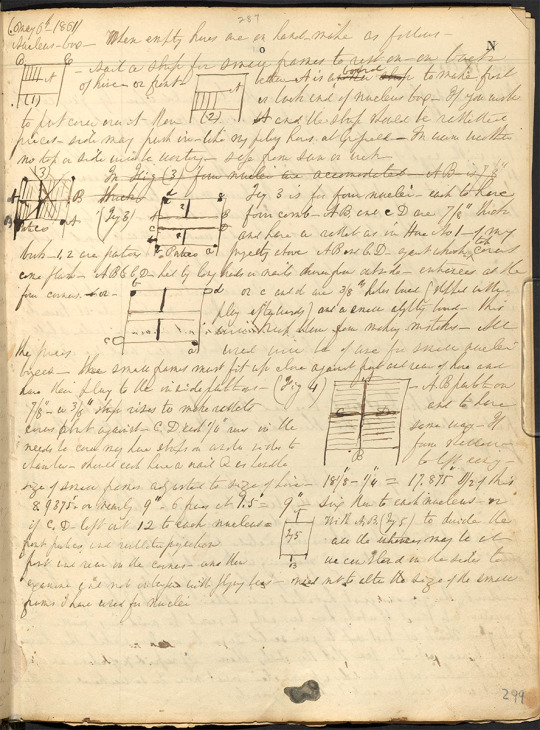
Page from "Journal on matters relating to bees, etc.," unpublished manuscript, Lorenzo Langstroth 1852-1895. in the special collections of Albert R. Mann Library, Cornell University.
For those not yet fully in the know, Lorenzo Langstroth looms large in American beekeeping history thanks to discoveries and inventions he made as a self-taught apiarist, innovations which essentially revolutionized the 19th century practice of beekeeping in North America and facilitated its development into the profitable industry of today. His guide on beekeeping, The Hive and the Honeybee, was first published in 1853 and remains in print even today. Langstroth’s story is also poignantly notable for a reason that you don’t have to a be a beekeeper to appreciate deeply: his struggles with debilitating depression, which stymied many of his professional endeavors. While working intermittently as a pastor and teacher when his mental health allowed, Langstroth found constant, life-affirming inspiration in the bee world he observed closely through the prism of the hives he kept for most of his adult life.
The history of beekeeping stretches back to prehistoric times, but when Langstroth patented his movable frame beehive in 1852 it created a worldwide revolution in the practice of keeping bees. On this page of his journal, we see the exact moment—the “aha” moment—that Langstroth landed on his brilliant insight: the significance of applying the concept of "beespace" to design hives that allow easier harvesting of honey than possible in earlier hive structures. The rest, as they say, is history.
The journal Langstroth kept is a treasure for several reasons. It provides fascinating insight into pivotal moments of beekeeping’s technological history. It is, as well, an intimate view of resilience in face of sometimes devastating mental health challenges. And last but really not least, in the comments and pet peeves that Langstroth also recorded in his ongoing notes-to-self, his off-the-record writing offers a more mundane but no less instructive tour through the day-to-day concerns—from keeping bee hives productive to the vexing challenges of protecting trade secrets and securing patents for promising new discoveries in a timely way—that would have been top-of-mind for any aspiring agricultural entrepreneur of the 19th century.
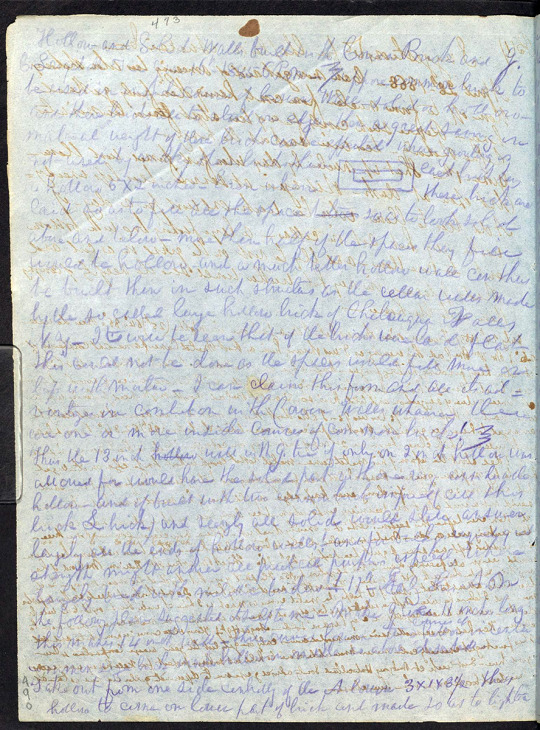
Page from "Journal on matters relating to bees, etc.," unpublished manuscript, Lorenzo Langstroth 1852-1895. in the special collections of Albert R. Mann Library, Cornell University.
The online availability of Langstroth’s journal in both its handwritten and transcribed form has been a work very long in the making. When early 20th century entomologist Everett Franklin Phillipps joined the Cornell faculty 1924, he made it his mission to establish one of the world’s most important collections of beekeeping materials—now known as the E. F. Phillips Collection at Mann Library. Recognizing the importance of one of this collections’ gems—the Langstroth journal—for the beekeeping field, Phillips began the painstaking process of transcribing 600 pages of its cramped, highly slanted script—rendered even more illegible by the frequent ink bleed-through from other pages—into easily readable typescript. The project remained unfinished at the time of Phillips passing in 1951, and others took up the work intermittently over the following decades. But it wasn’t until the epic pandemic-era national lockdown of 2020 that intrepid collections specialist Betsy Elswit finally found herself with the time needed to finish transcribing of the journal's final 200 pages. Thanks to this heroic work, a browse through the work on the Biodiversity Diversity Heritage Library today provides a look at Langstroth’s original writing with a side-by-side view of transcribed, machine-readable text. Thank you Betsy! And thank you, Reverend Langstroth, for persevering through the inspirational highs and deep lows of life to impact the practice of beekeeping so profoundly, and to leave us such a rich record of such remarkable scientific observation and personal achievement.
And with that, we leave you with our best wishes for a good, hope-filled winter holiday season!
#Langstroth#beekeeping#beekeeper#apiculture#mann library#cornell university#rare books#vintage book#archives#mental health#agricultural history#special collections#bees#honey#apiary#honey bees
11 notes
·
View notes
Text
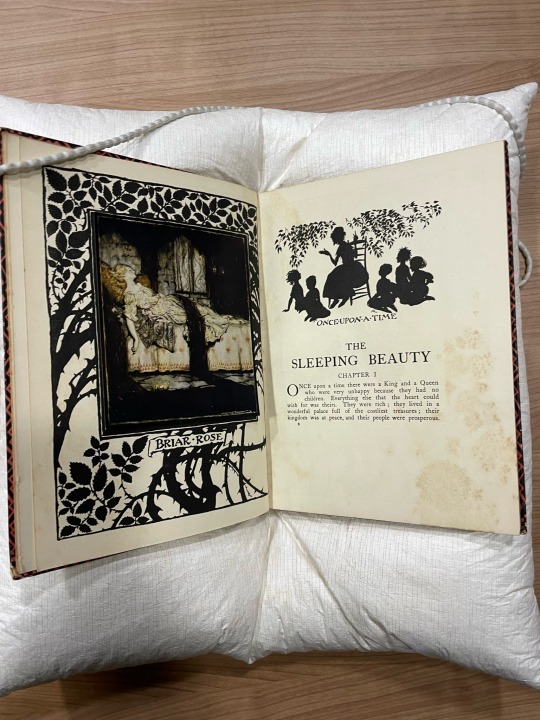



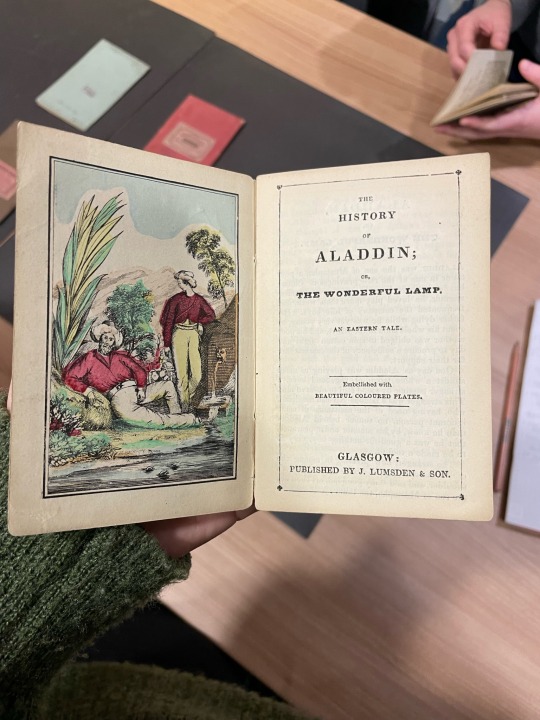

took a trip to special collections
all items from university of glasgow special collections/library. shelf marks below
John Bunyan The Pilgrim’s Progress Sp Coll Mu47-d.9
Jacob Grimm, German popular stories Sp Coll RB 556
Lumsden’s Toy Books Sp Coll Bh13-c.28
Peter Pan playbill STA Fa11
C.S. Evans, The Sleeping Beauty Level 4: JH Historical EVA2
41 notes
·
View notes
Photo
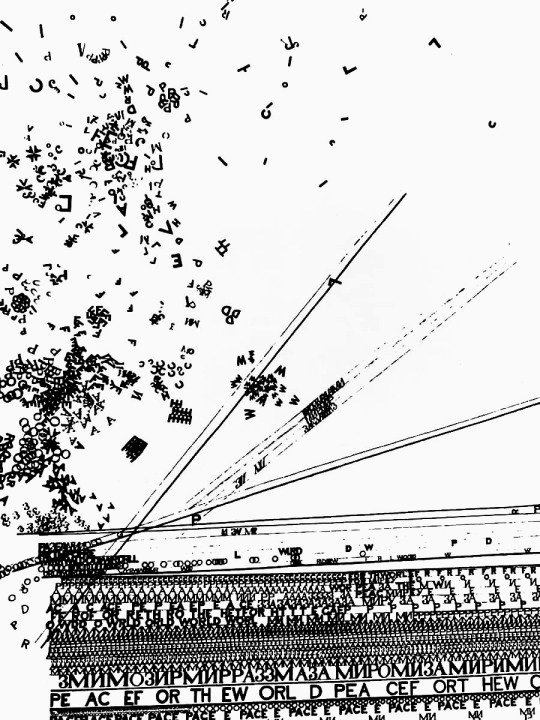
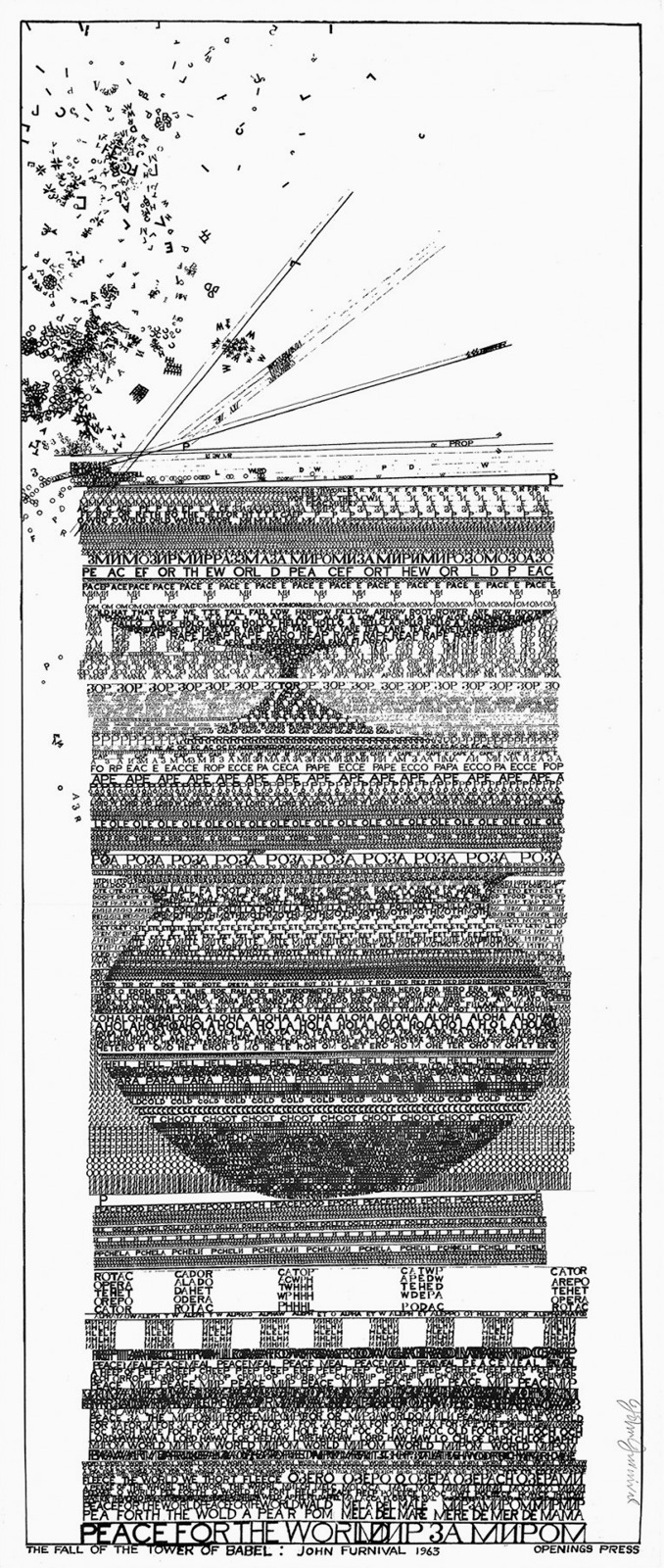


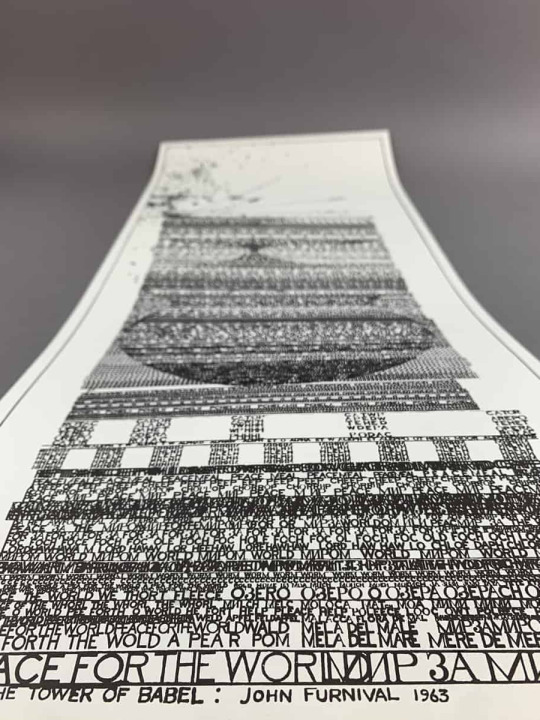
John Furnival, The Fall of the Tower of Babel – Peace to the World, [Opening Press], 1963-1995 [The Sackner Archive of Visual and Concrete Poetry, University of Iowa Libraries Special Collections, University of Iowa Libraries, Iowa City, IA. MACBA, Barcelona. © John Furnival]
#graphic design#art#poetry#concrete poetry#visual poetry#typewriting#geometry#pattern#john furnival#the sackner archive of concrete and visual poetry#university of iowa libraries special collections#university of iowa libraries#macba#1960s#1990s
104 notes
·
View notes
Text

The Northwestern University Libraries Blog posted this fairly detailed (and illustrated) overview of my talk last month, “Wakanda as a Window to the Study of Africa,” at the Herskovits Library of African Studies. The post also links to this YouTube recording of the hour-long event.
#comics#africa#african studies#wakanda#black panther#herskovits library#northwestern university#northwestern university libraries#material culture#special collections#archives
2 notes
·
View notes
Text
#VoicesFromTheStacks

It's Black History Month! And today we're showcasing two items from our Script Ephemera Collection!
The Script Ephemera Collection contains scripts that were considered for Best Screenplay in 2000. It also includes a variety of publicity kits sent to out to theaters and the press in order to spread the word about the film. Let's look at two of these publicity kits.


Booty Call: This is a 1997 comedy directed by Jeff Pollack. This movie is about Rushon (Tommy Davidson) who has been dating Nikki (Tamala Jones). When Rushon asks Nikki to dinner, she invites her friend Lysterine (Vivica A. Fox), and to forge a double date, Rushon gets his friend Bunz (Jamie Foxx) to join them. The two parties hit it up, and want to take both of their relationships to the next level, however, neither want to do that without "protection", and so starts the search.
The film got two thumbs up from film critics Siskel and Ebert, who praised it for it's vulgar humor.
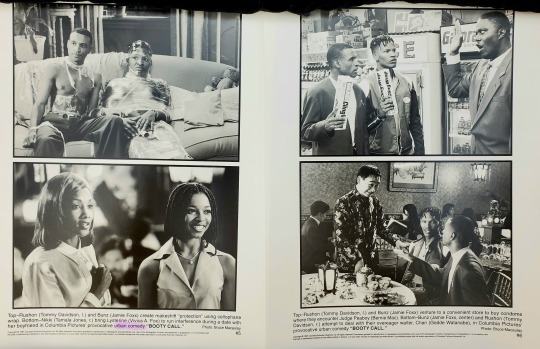
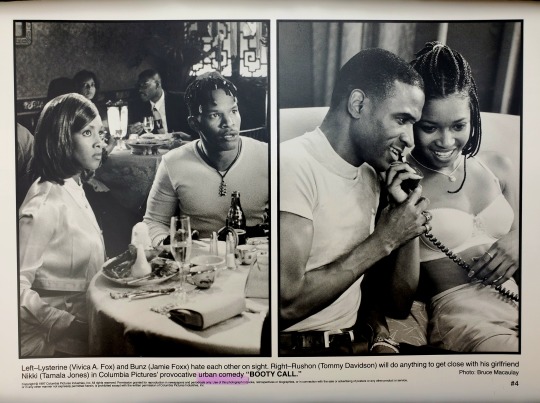

Soul Food: Also a 1997 film, this comedy-drama was written and directed by George Tillman Jr. Tillman based the family featured in the film on his own family, and was also written to show a more positive image of African-Americans than was typically seen in Hollywood films. There is talk now of a sequel being made, with Tillman as writer.
According to Rotten Tomatoes, Soul Food's synopsis is as follows: "when Ahmad Simmons' (Brandon Hammond) diabetic grandmother, Josephine "Big Mama" Joseph (Irma P. Hall), falls into a coma during an operation to amputate her leg, it throws the Joseph family into chaos. Ahmad watches as his mother, Maxine (Vivica A. Fox), and aunts Teri (Vanessa L. Williams) and Tracy (Nia Long) struggle to adjust to the family matriarch's sudden absence, fall into old rivalries, share memories, and work to maintain the long-standing tradition of Sunday family dinners."
The film holds an 82% on Rotten Tomatoes, and film critic Roger Ebert gave it 3.5 out of 4 stars. The film won Acapulco Black Film Festival's Best Film Award in 1998, the Outstanding Motion Picture Award from NAACP Image Awards in 1998, and a Grammy for Best Song Written Specifically for a Motion Picture ("A Song for Mama") also in 1998. Not to mention several nominations and awards for the actors and actresses starring in the film as well.
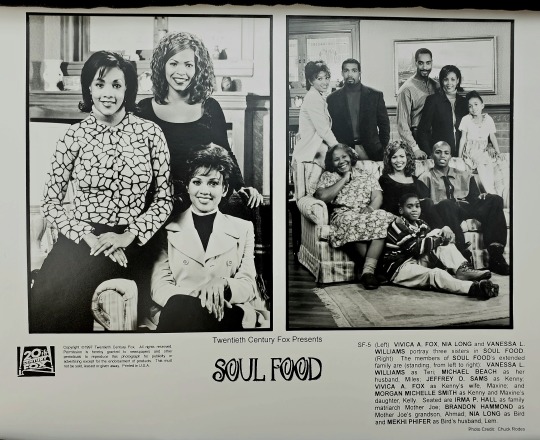
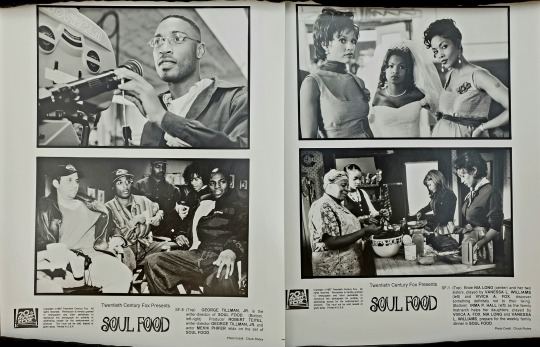
Both movies feature prominent actors in the Black community: Jamie Foxx, Nia Long, Tamala Jones, and Vivica A. Fox, who stars in both movies.
Black films are a significant part of our culture, and here at the University of Iowa's Special Collection & Archives, we are working to collect more of this piece of history for our students and faculty to study. More can be found in our Black Film and Television Collection which contains scripts, lobby cards, posters, and other ephemeral works from the silent age, race films of the 1930s through the 1950s, Blaxploitation films of the 1970s, and films from the 1990s and 2000s.
--Matrice Y., Special Collections, Olson Graduate Assistant.
#uiowa#libraries#university of iowa#uiowaspecialcollections#voicesfromthestacks#african american history#black history#blackhistorymonth#black history month#black actress#black actor#archives#special collections
13 notes
·
View notes
Text
hey! i haven't ever posted anything on this blog...i prefer to be a silent observer in all aspects of my life. but i recently (okay like nearly 2 months ago) got my dream job working in my university's special collections and archives library. over the past few weeks i have stumbled upon some of the most interesting books and manuscripts that i just have to share with anyone interested because it is absolutely fascinating!

inside cover of a book from the 1800s. my roommate said it looked like the bottom of an untouched stream. i didn't see it until they pointed it out, but it is so accurate

staircase to get to the collections. pictures don't do this wood grain justice, it is gorgeous up close, especially when the early morning sun hits it just right...perfection

inside of the elevator we use to get to the different decks. it's the oldest working elevator in all of oregon !

one of the most popular requests in our collections: an original, handwritten copy of ken kesey papers. we have over 100 boxes of his books, papers, manuscripts...anything of his you could possibly think of, we probably have it
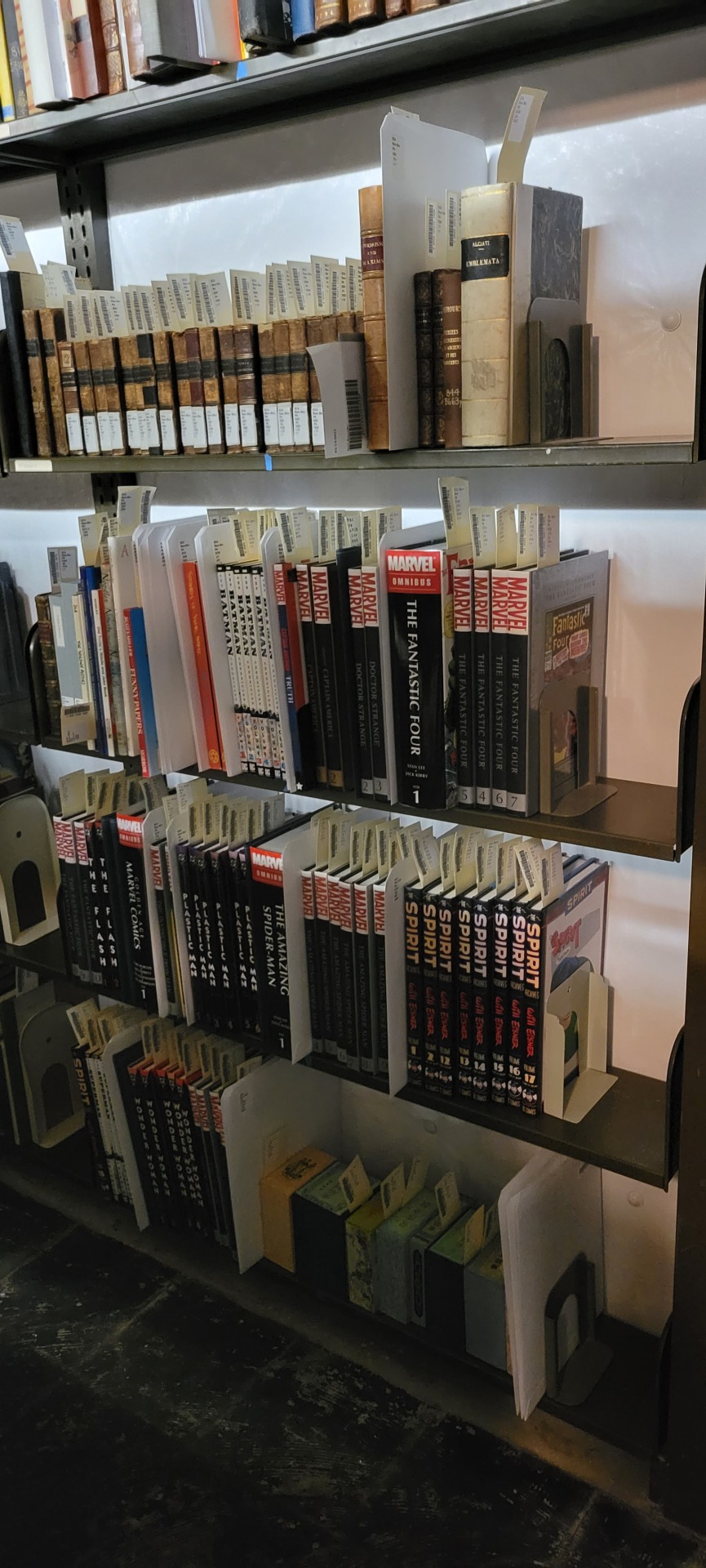
for fellow comic fans, we have an entire shelf dedicated to various books on fandoms, including marvel and batman! i have never pulled one out for anybody, but i'm hoping somebody will request one so i can look more in-depth without looking suspicious to my fellow coworkers and the librarians...

the past will not sleep, printed on shiny gold paper in a book from the 1800s (i was literally shaking holding this, it's so cool)

original journals of the lewis and clark expedition (again, i was literally shaking; this job is amazing)

as a journalism major, these were particularly fascinating...we have several books of famous journalists from our university, but all around the world too. gotta find a way to get my hands on these outside of my shifts...
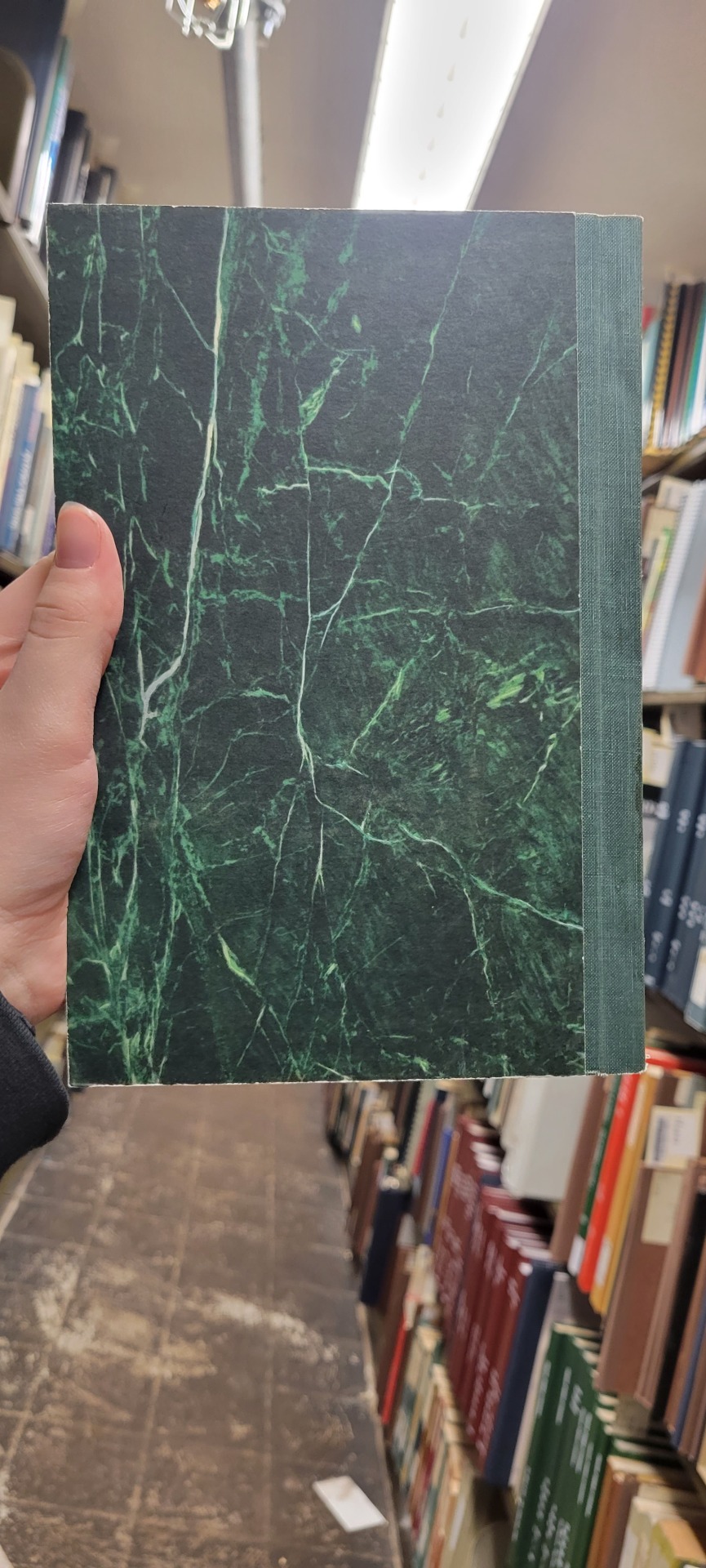
the back cover of a book in our oregon collection. i believe this had something to do with farming and agriculture, but either way it was so pretty
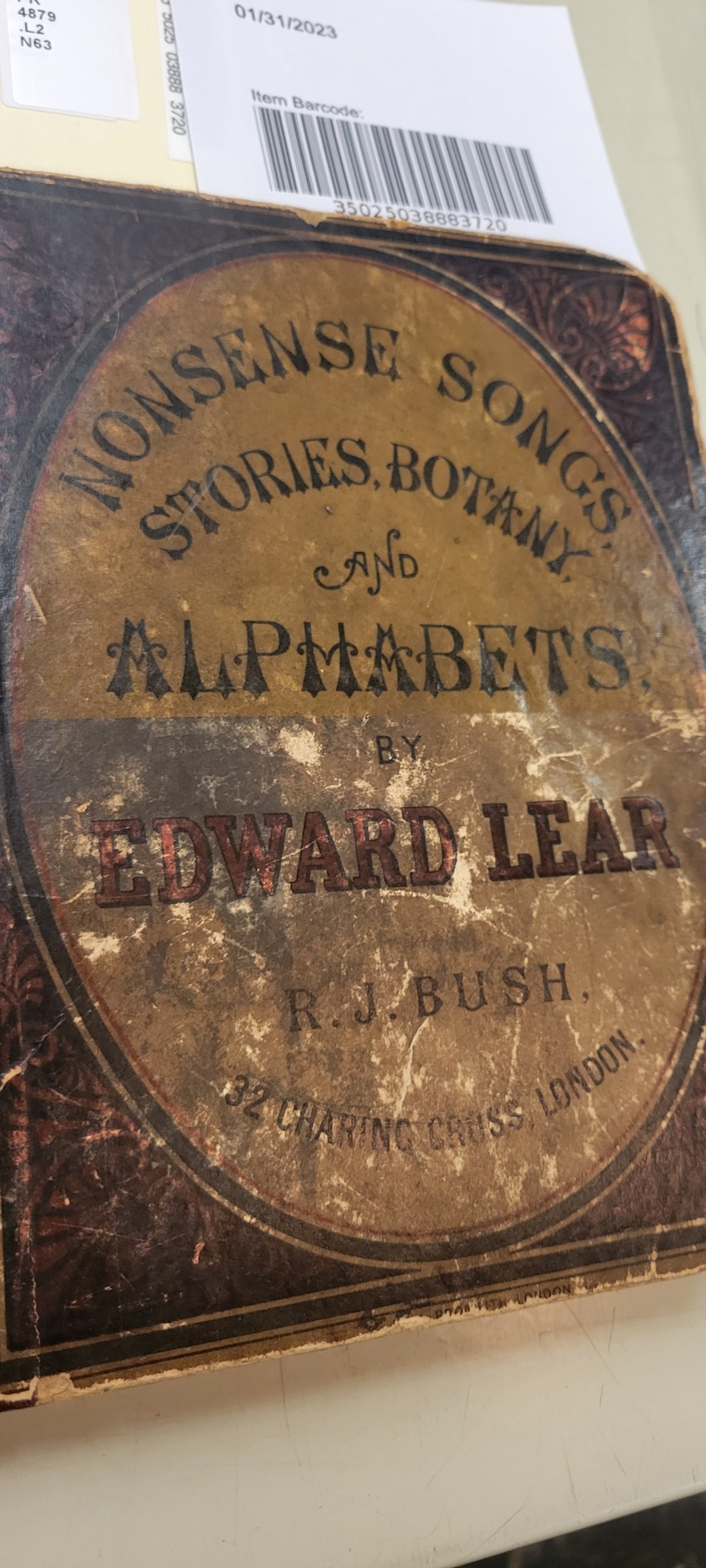
nonsense songs, stories, botany, and alphabets by edward lear; this book was literally falling apart in my hands but wow. just the title alone is so interesting, not to mention it's from london !
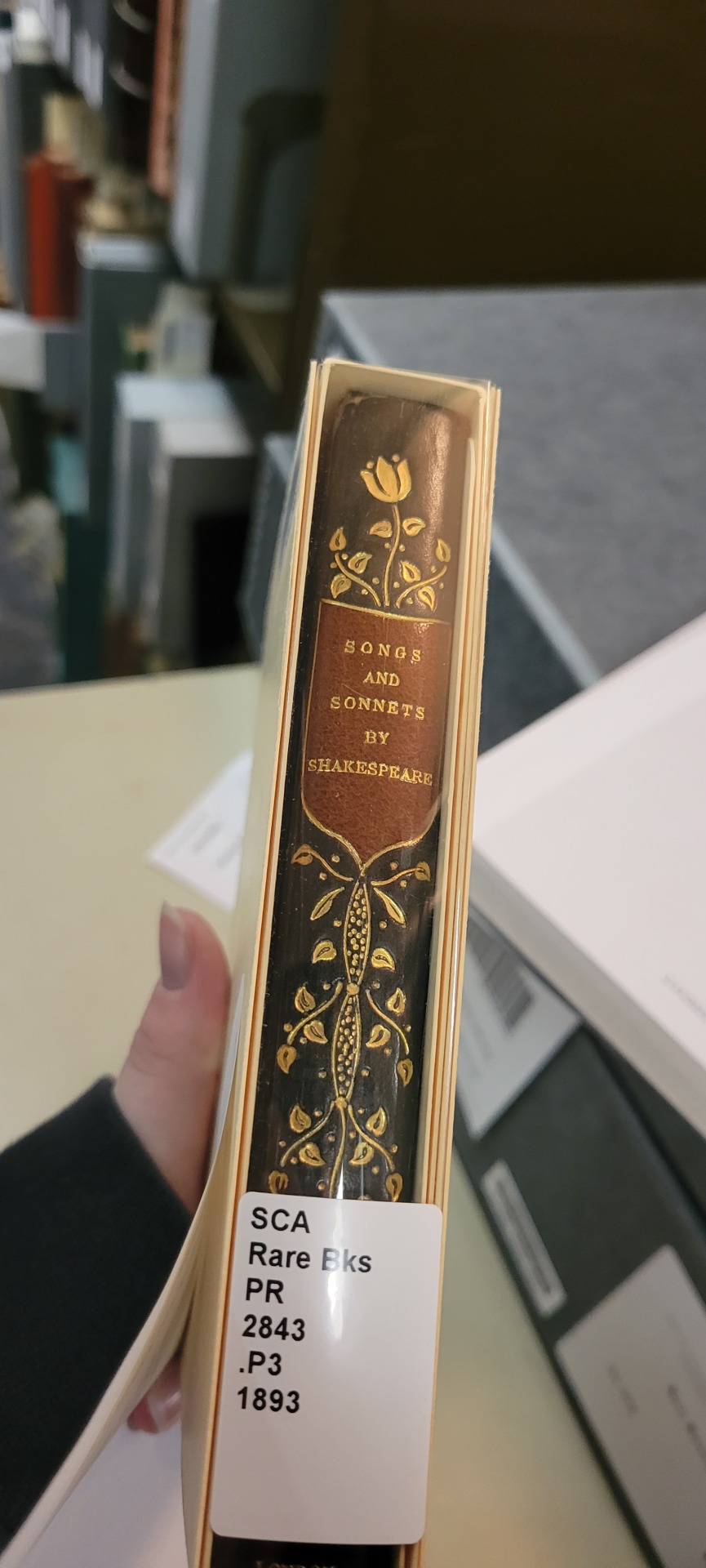
songs and sonnets by shakespeare...not an original unfortunately but still super amazing to see, and be physically hold his writing in my hands
sometimes i have to take a step back and remember that i am literally living my childhood dream. then that realization sinks in and i am absolutely shocked about it.
anyway, that's all for now. i will definitely have more to share because these finds are so interesting. if anyone has any requests they want me to look for, please let me know and i will do my best to scavenge around these stacks like a creepy little gremlin and take pictures for the people in my computer.
#university#library#academic libraries#university library#special collections#library archives#books & libraries#book#books#shakespeare#william shakespere#lewis and clark#oregon#edward lear#the past will not sleep#journalism#marvel#ken kesey#ken kesey papers#old elevator#dark acadamia aesthetic#dark academism#dark academia#chaotic academia#chaotic academic aesthetic#soft academia#academia aesthetic#academia#batman#light academia
10 notes
·
View notes
Text
tfw u find a graduate program that sounds fucking incredible and has a specialization in book conservation, but then you look at the application requirements and realize you'll never get in 😔
#//juri speaks#i don't have 4+ upper level art history research classes or a studio portfolio or mastery of a non-english research language#so. going to uh... keep looking i suppose#and you may be wondering ''juri aren't you about to graduate? why are you looking at other programs?''#and the answer dear reader is bc i've realized i actually want to specialize in something i have not gotten experience in#bc the archives prof at my school sucked shit so i didn't get the certs and i talked myself out of a special collections practicum#bc i didn't have even the tiniest bit of experience in archives/special collections save for dropping out of a class a week in#anyway. current actual plan is 1) graduate; 2) full time job; 3) save money; and#4) take advantage of working at a university to take other classes for free#hopefully my boss will let me take the undergrad asl classes#and i can take grad library/archive classes at a different university i think#and who knows maybe i'll actually have my career figured out before i'm 40
5 notes
·
View notes
Text
"Stuck in that amulet": From artifact to Crown Princess [Part 3]
Continued from part 2

Elena trapped inside the amulet as shown in the film, Elena and the Secret of Avalor
Coming back to the amulet, it bestows power on those who wear it, it stores magic, but cannot be a weapon. Even more significant is the fact that if the amulet had been destroyed before Sofia had freed Elena, she would have died! The amulet also can curse those who do bad deeds. Reportedly, it is famous among those who practice magic in the interconnected world of Elena of Avalor and Sofia the First. It has a bit of a provenance as well, specifically created in the Kingdom of Maru (akin to the Aztecs or Mayans perhaps), an ancient civilization that disappeared before the Kingdom of Avalor came about.
Reprinted from my Wading Through the Cultural Stacks WordPress blog. Originally published on Mar 15, 2023.
Unlike the magical mirror in Steven Universe, the amulet more directly fulfills the definition of an artifact in the Dictionary of Archives Terminology: "a physical object that is made or modified by human culture." More than that, the amulet is something tangible, as it obviously has "significant depth relative to its height and width", i.e., an object. It is not, however, a specimen nor a resource or an item. Hence, there are specific ways to preserve it and ensure it is not damaged. Over its history, it was passed down through royals until it reached Sofia, becoming her birthday present, and Elena even let her keep it as a sign of gratitude for saving her from the amulet.
Some have claimed that certain amulets have a "soul" or internal energy, noting that it is "important what material the amulet is made of, what kind of stones it is incrusted with" along with what signs and symbols. [4] Historically, the Egyptians believed that amulets would protect a mummified person after death. Others have stated that amulets, and talismans, were the "ultimate power players" in the ancient world, by "summoning protection". The amulet I'm discussing in this article is a fire opal, and originally red, becoming purple when she wore it. The word opal, itself, comes from the Latin words "opalus" or "opalius" in Greek, meaning precious stone, while a fire opal is named after fire, meaning a "fiery spirit and energy". It has also been associated with good luck, love, healing, calm, wealth, creativity, and amplifying feelings, depending on the culture. Compare this to a purple opal which seems to "increase...one’s mental capacity as a whole", while opals can also be "highly favored as a symbol of hope and purity". [5]
Otherwise, There isn't much else to say because the amulet doesn't really have much of a role in the show proper (Elena of Avalor) other than giving her magical powers, allowing to use the Scepter of Light, first shown in the episode "Scepter of Light". The scepter allows her to channel the magical powers given to her by being in the amulet. So, that's a positive from being stuck in an amulet for over 40 years! If her amulet had been stored usually, it would be in a special collections. Anyway, as always, comments and suggestions are welcome.
© 2022 Burkely Hermann. All rights reserved.
Notes
[4] For this, see "Spiritual amulets – The most consistent protection tool", a page on a website calling itself Spellcaster Maxim, run by a person who describes themselves as an esoteric, astrologer, and writer.
[5] See Minikin, Tracey. "The Powerful Legacy of Talismans and Amulets in Modern Society." Veranda, Jun. 29, 2020; Smith, Olivia. "Fire Opal Meanings, Properties and Uses." Crystal Stones, Nov. 3, 2021; "Purple Opal (Morado Opal)." Crystal Council. Accessed Sept. 1, 2022; "Purple Opal Meaning and Properties." Emoche. Accessed Sept. 1, 2022.
#elena of avalor#amulet#archivy#tv films#steven universe#egypt#archival science#archival studies#preservation#special collections#definitions#society of american archivists#artifacts#pop culture#reviews#aimee carrero
4 notes
·
View notes
Text
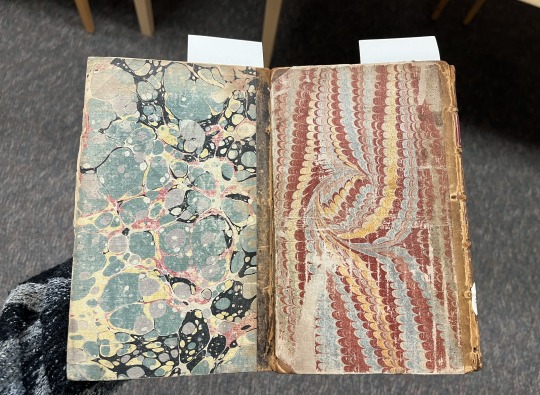

Some unexpected marbling on two books (here and here) covering the trial of Lord Sackville, 1760.
#riesenfeld center#umn#university of minnesota law#university of minnesota law library#umn law#rare books#archives#special collections#law school#old books#marbling#beautiful book covers
191 notes
·
View notes
Photo

Harry Crosby, UCSD Electronic Music Happening, 1968
#60s#60s fashion#1960s#1960s fashion#vintage fashion#vintage#uc san diego#ucsd#revelle college#happening#electronic music#harry crosby#university#college#university of california#san diego#photography#black and white#performance#special collections & archives uc san diego#an2_m333_1045_27
119 notes
·
View notes
Text

For this month's #ArchivesHashtagParty, we're taking an #ArchivesVacay! Explore exotic locations illustrated in our travel poster collection, and take a look at how they were made in the student-curated exhibit Commercial Art: Travel Posters in Special Collections.

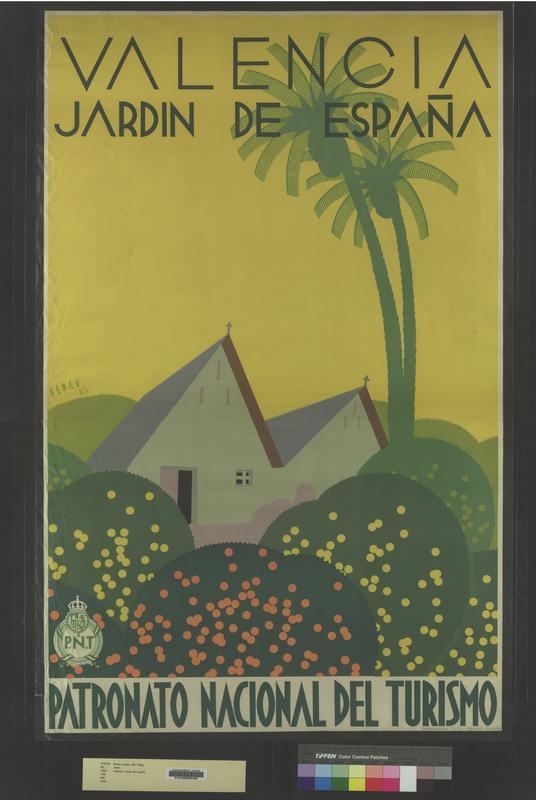
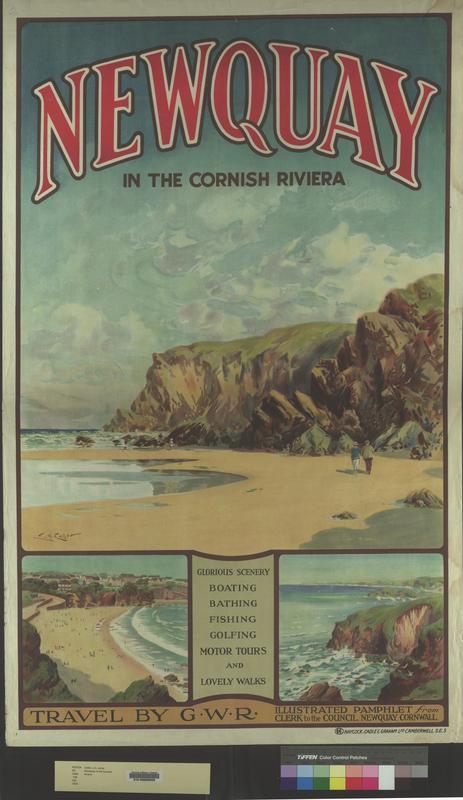
#archiveshashtagparty#archivesvacay#travel#vacation#vintage travel poster#mizzou#special collections#libraries#university of missouri#illustration#history#archives#kelli h
82 notes
·
View notes
Text
Christmas at the Tech, 1912-1963 - Part 3: Christmas Lectures for Young People
To conclude our short series of posts about Christmas activities at Strathclyde’s antecedent institution, the Royal Technical College (RTC, known from 1956 as the Royal College of Science and Technology), we look at the annual Christmas Lectures for Young People. These commenced in the 1950s, upon the suggestion of the Scottish Education Department (SED). Popular science lectures for older children were then an established feature of the Christmas season in London…
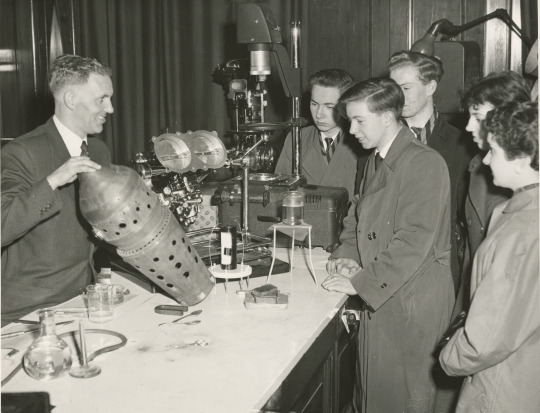
Christmas Lectures for Young People
The RTC’s annual Christmas Lectures for Young People commenced in the early 1950s, upon the suggestion of the Scottish Education Department (SED). Popular science lectures for older children were then an established feature of the Christmas season in London, and the SED, feeling that ‘Scotland was lagging behind England in this matter’, approached the Director of the RTC, Dr (later Sir) David Anderson, in 1951 with the idea of providing similar lectures for secondary school pupils in the West of Scotland.[1] Anderson responded positively, and the first Christmas Lectures for schoolchildren in Glasgow and the West of Scotland, organised by the RTC in conjunction with the SED, were delivered on 3 and 4 January 1952. The presenter, Dr Charles H. Giles of the RTC’s Department of Technical Chemistry, addressed the theme of ‘Chemistry and Colour Photography.’
Having proved successful, the lectures then became a permanent feature in the RTC calendar, taking place every December. Lectures on two different topics, delivered by separate presenters, were offered each year, with both presenters repeating their lecture a second time so that as many children as possible could attend. In session 1953-1954, external academics from the University of Edinburgh and University College, Dublin were invited to come and deliver the lectures. However, it proved so challenging for them to arrange and rehearse their practical demonstrations at the RTC in advance that, in subsequent years, the speakers were selected solely from the staff of the RTC.
The Christmas Lectures for Young People were carried on by the RTC’s successor bodies, the Royal College of Science and Technology (RCST, 1956-1964) and the University of Strathclyde (1964 onwards). While their primary purpose was to inspire and instruct children in aspects of science and technology, the lectures also served to entertain, and the presenters often chose topics that would appeal to children, such as ‘Pests and Parasites’ (1954) and the aptly named ‘Combustion – Some Burning Questions’ (1958). The photograph above shows Dr P.T. Carter, senior lecturer in the Department of Metallurgy, explaining the principles of jet and combustion engines to some of the children who heard him speak on ‘Metals in the Service of Mankind’ in December 1956 (reference: OP4/191).
[1] OE/12/12/24, Papers and correspondence relating to Christmas Lectures. Note on Christmas Lectures, c.1955.
#large#Archives and Special Collections#University of Strathclyde#EYA2022#explorearchives#Christmas#Royal Technical College#Royal College of Science and Technology#Christmas at the Tech
3 notes
·
View notes